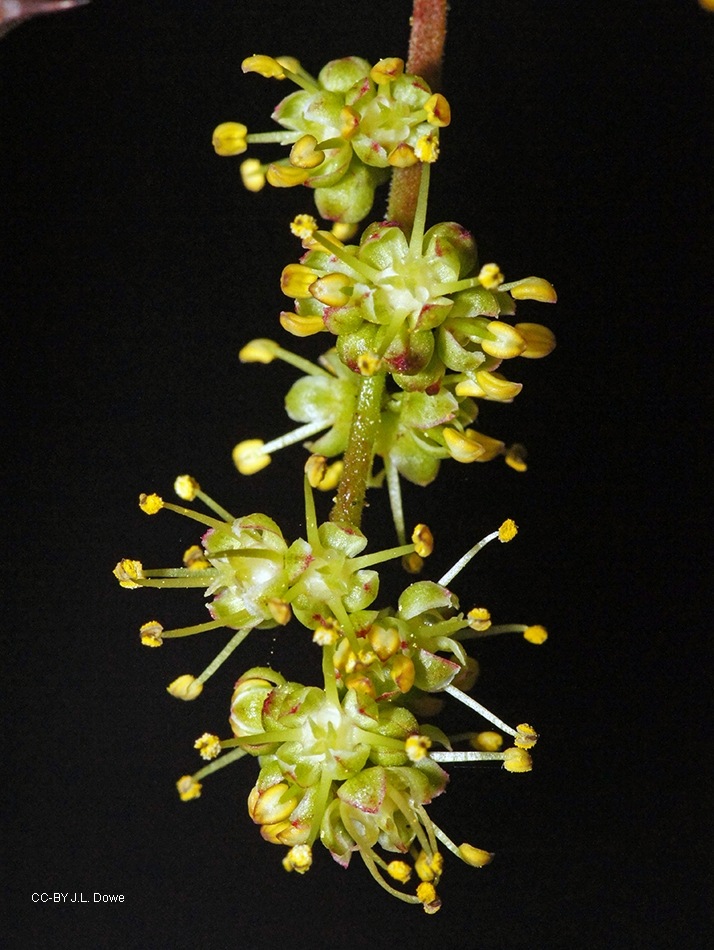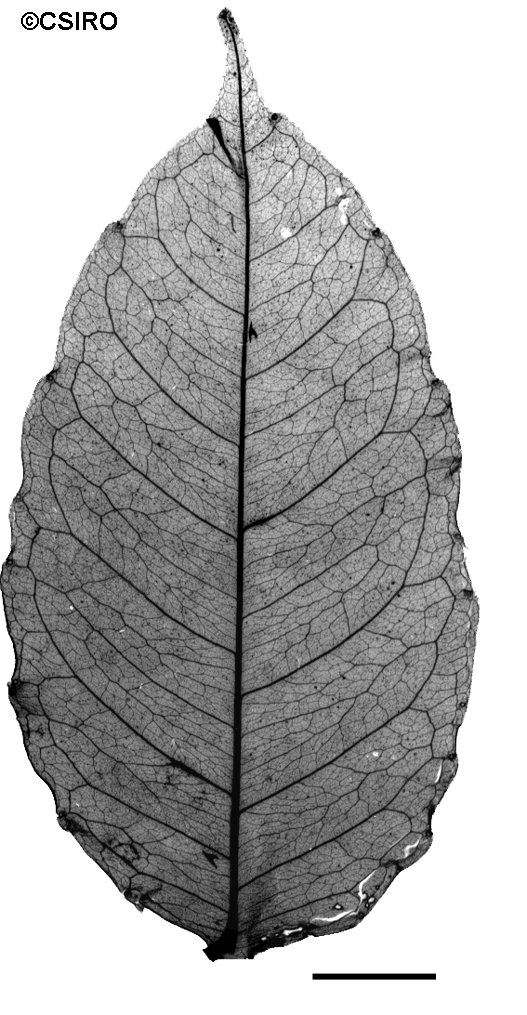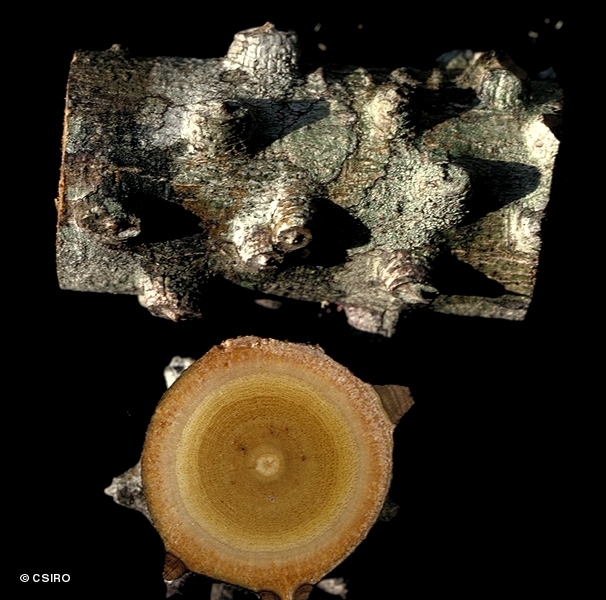Australian Tropical Rainforest Plants - Online edition
Zanthoxylum nitidum (Roxb.) DC.



Gingins de Lassaraz, F.C.J. ex Candolle, A.P. de (1824) Prodromus 1: 727.
Vine stem diameters to 4 cm recorded. Stems armed with corky processes each ending in a spine, each of these structures resembles a rhinoceros horn.
Twigs and branches armed with numerous recurved spines, similar spines are also present on the underside of the compound leaf rhachis and on the underside of the midrib of most leaflets. Leaflet blades about 5-9 x 2-4.5 cm, leaflet stalks about 0.5-3 mm long. Leaflet blade margins crenate with a large oil gland at the base of each tooth.
Female flowers: Inflorescence shortly branched. Pedicels about 1-3 mm long. Sepals broadly triangular, about 1 mm long, oil glands small and numerous. Petals ovate to elliptic, about 2-3 mm long, oil glands visible, small. Staminodes about 0.5 mm long. Carpels (ovaries) about 1.5-2 mm long, green, oil dots numerous. Stigma green, about 1.5 mm diam.
Ripe fruits red. Fruiting carpels 1-4 in each cluster, each carpel +/- globular, laterally compressed, about 5-7 mm diam., surface marked by large oil dots. Seeds shiny black, +/- globular, about 4-5 mm diam. Cotyledons about 4 mm long. Radicle about 0.5 mm long.
Features not available.
This species may have medicinal properties.





